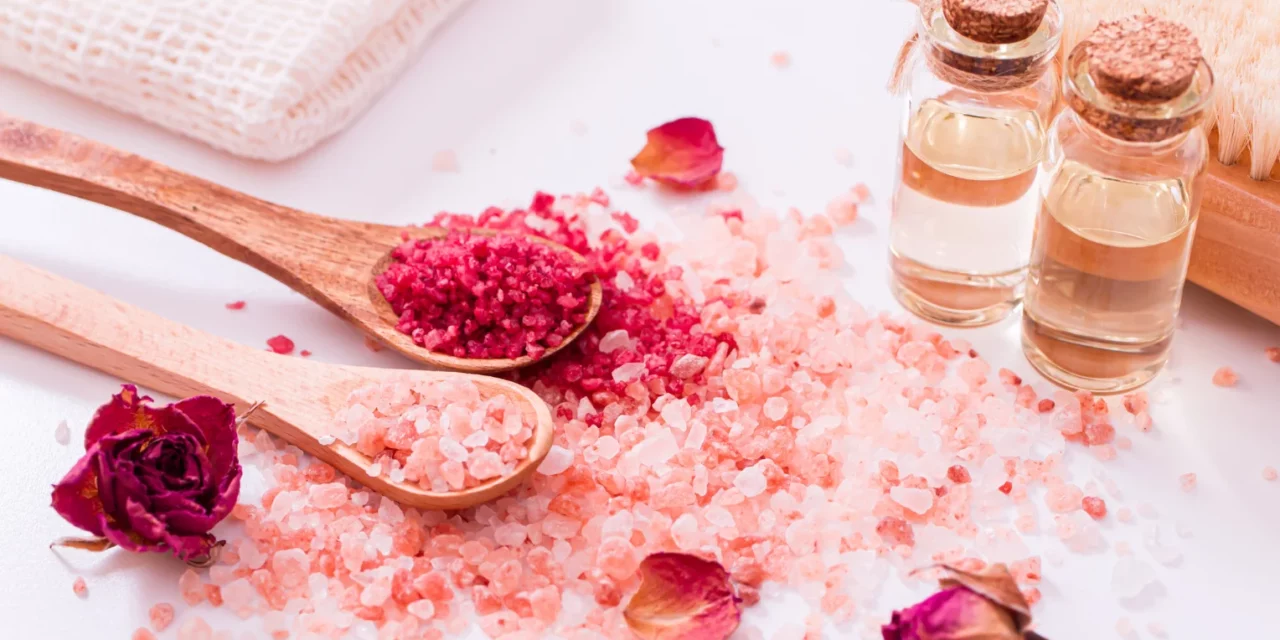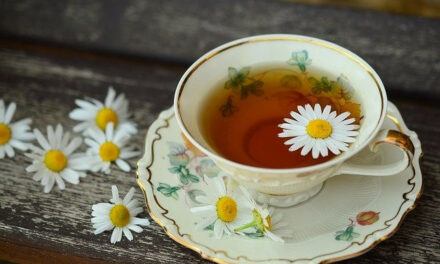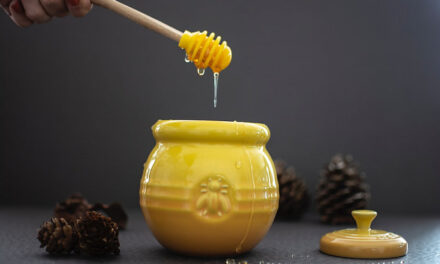If you’ve ever wandered down the spice aisle of your local grocery store, you’ve likely noticed more than just basic table salt. Among them, two have gained significant attention in both the health and culinary worlds: rose salt and pink salt. These vibrant salts not only enhance the visual appeal of your dishes but also promise potential health benefits. This has sparked the question, “Rose Salts vs. Pink Salts – Which Ones Are Healthier?”
However, the real question is: which salt is truly healthier? Are they merely trendy additions, or do they actually offer nutritional value? To find out, let’s delve into the rose salt vs. pink salt debate and uncover the facts, separating truth from flavorful fiction!
What Are Rose Salts?
Rose salts, also known as salts with rose petals, are a luxurious and fragrant addition to any culinary or self-care routine. Specifically, the combination of salt and delicate rose petals creates a unique flavor profile that adds depth and complexity to dishes. Moreover, beyond their culinary use, rose salts are often incorporated into bath salts and body scrubs, thanks to their relaxing and rejuvenating properties.
Furthermore, the floral aroma of the rose petals infuses the salt with a subtle scent, which enhances the overall experience. These salts are also believed to offer various health benefits, such as promoting relaxation, reducing stress, and improving skin health. Consequently, introducing rose salts into your routine can add a touch of elegance and indulgence to everyday life.
Types Of Rose Salts
Rose salts come in several varieties, each with unique features and uses. Here’s a brief overview of the main types:
- Rose Salt With Petals
This rose salt variety mixes dried rose petals with the salt, either crushed or in larger pieces. Chefs often use it as a finishing touch for dishes to add a subtle floral flavor. Additionally, people incorporate it into bath salts and body scrubs for its visual appeal and delightful fragrance
- Rose Salt With Essence
This type of rose salt blends with rose essence or oil, giving it a strong floral scent without adding rose petals. Chefs use it to impart a subtle rose flavor to dishes, and manufacturers incorporate it into cosmetics and bath products for its pleasant aroma.
- Rose Himalayan Salt
This pink Himalayan salt features rose essence or rose petals mixed in. It serves both culinary and decorative purposes. The salt retains the mineral benefits of Himalayan salt, while the rose infusion adds a unique flavor and visual appeal.
- Rose Sea Salt
This sea salt features rose petals or rose essence. Chefs use it as a finishing touch for gourmet dishes to add elegance and a subtle floral note
- Rose Bath Salt
This rose salt blends rose petals or essence with bath salts and is mainly used for bathing. People add it to bathwater to enhance relaxation and create a pleasant, fragrant bathing experience.
Each variety of rose salt serves different purposes, whether for culinary enhancement or cosmetic use.
What Are Pink Salts?
Often sourced from ancient deposits in Pakistan’s Khewra Salt Mine, these mineral-rich crystals are more than just a pretty addition to your kitchen counter. Indeed, they are geological marvels, embodying eons of Earth’s history with hues ranging from soft blush to dark rose. However, beyond their picturesque appearance lies a composition that intrigues both health enthusiasts and chefs alike.
In contrast to heavily processed table salt, pink salt retains many trace elements, including magnesium, potassium, and calcium. These elements are not just footnotes; they play crucial roles in maintaining our body’s equilibrium.
Types Of Pink Salts
Here are some of the pink salts which are found all over the world:
- Himalayan Pink Salt
This salt comes from mines near the Himalayas, primarily in Pakistan. Its pink color comes from mineral impurities. People use it in cooking and as a decorative salt.
- Bolivian Rose Salt
Coming from the Andes Mountains, this pink salt is hand-harvested from ancient salt deposits and has a beautiful rose hue. It offers a delicate flavor suitable for various culinary uses.
- Sherpa Pink Gourmet Salt
Harvesters collect this pink salt from deep within the Himalayan mountains. Rich in minerals, it is one of the purest salts available. Its vibrant pink color makes it a popular choice for both cooking and presentation.
- Australian Murray River Pink Flake Salt
This light, flaky pink salt comes from the Murray River in Australia. Its delicate texture and mild taste make it an excellent finishing salt for seafood and vegetables.
- Peruvian Pink Salt
This pink salt comes from ancient oceanic deposits high in the Andean mountains in Peru. Collectors gather it by hand using traditional methods. Its unique flavor profile adds depth to dishes.
- Pakistani Kala Namak (Black Salt)
Though not traditionally pink, when ground into a fine powder, it exhibits a pinkish hue due to iron sulfide content. It’s highly valued in South Asian cuisine for its distinct sulfurous aroma and flavor, adding complexity to vegan dishes by mimicking egg flavors.
5 Popular Rose Salts
- Himalayan Pink Rose Salt
A premium salt that combines the mineral benefits of Himalayan salt with the aromatic infusion of rose petals, making it an excellent choice for both culinary and wellness applications. Its pink hue adds a visually appealing touch to dishes.
- French Rose Sea Salt (Sel Gris à la Rose)
Harvested from the clay-lined salt ponds in the Guérande region of France, this sea salt is blended with dried rose petals to create a unique flavor profile. It’s perfect for finishing dishes or as a component in sophisticated spice blends.
- Persian Blue Salt With Rose Petals
This rare salt, known for its striking blue crystals, is harvested from ancient salt lakes in Iran. Infused with rose petals, it presents a delicate floral flavor that compliments seafood and desserts beautifully.
- Bolivian Rose Andean Salt
This pink salt, sourced from ancient salt beds in Bolivia, is hand-harvested and naturally infused with rose essence. It boasts a crisp texture, making it ideal for grilling or seasoning meats and vegetables.
- Wild Rose Salt
Wild rose salt is a beautiful, floral, and super tasty pink salt made from wild rose petals and flake salt. You can use wild rose salt on meat, fish, grilled veggies, salads, and poached eggs.
5 Popular Pink Salts
- Himalayan Pink Salt
Sourced from salt mines near the Himalayas, mainly in Pakistan, this salt is well-known for its distinctive pink color. It is often touted for its mineral content and potential health benefits.
- Bolivian Rose Salt
Derived from ancient sea salt deposits in the Andes Mountains of Bolivia, this pink salt is carefully harvested for its unique color. Its beautiful rose color and rich mineral flavor make it a favorite among gourmet cooks.
- Sherpa Pink Gourmet Salt
A type of Himalayan salt, Sherpa Pink is known for its high mineral content and purity. It’s hand-mined and suitable for use in cooking, as a finishing salt, or even as bath salts due to its therapeutic properties.
- Peruvian Pink Salt
Harvested from ancient oceanic deposits found in the Andean Mountains of Peru, this rare pink salt has been collected by hand for over 2000 years. It’s known for its light, delicate flavor which makes it an excellent finishing salt.
- Australian Murray River Pink Flake Salt
This light, peach-colored flake salt is harvested from the Murray River region of Australia. Its mild flavor and crispy texture make it an ideal finishing touch for both savory dishes and desserts alike.
Each of these salts offers a unique taste and texture that can enhance your culinary creations. Additionally, they add a splash of natural color to your dishes.
Nutritional Comparison And Potential Health Benefits
| Salt Type | Origin | Minerals | Culinary Uses | Health Benefits |
| Himalayan Pink Rose Salt | Himalayas | Rich in minerals | Culinary applications, wellness applications | Potential for trace mineral intake, aesthetically pleasing |
| French Rose Sea Salt | Guérande, France | Minerals, dried rose petals | Finishing dishes, spice blends | Adds unique flavor profile, potential for trace minerals |
| Persian Blue Salt with Rose | Iran | Blue crystals, rose petals | Compliments seafood, desserts | Unique flavor, potential for trace minerals |
| Bolivian Rose Andean Salt | Bolivia | Enriched with rose essence | Grilling, seasoning meats and vegetables | Adds crisp texture, potential for trace minerals |
| Wild Rose Salt | Not specified | Wild rose petals, flake salt | Meat, fish, grilled veggies, salads, poached eggs | Floral taste, versatility |
| Himalayan Pink Salt | Himalayas (Pakistan) | Rich in minerals | Culinary applications, bath salts | Potential for trace mineral intake, reputed health benefits |
| Bolivian Rose Salt | Andes Mountains (Bolivia) | Rich mineral flavor | Culinary applications, seasoning | Adds unique flavor profile, potential for trace minerals |
| Sherpa Pink Gourmet Salt | Himalayas | High mineral content | Cooking, finishing salt, bath salts | Therapeutic properties, potential for trace minerals |
| Peruvian Pink Salt | Andean Mountains (Peru) | Delicate flavor | Finishing salt | Light taste, potential for trace minerals |
| Australian Murray River Pink | Murray River (Australia) | Mild flavor, crispy texture | Savory dishes, desserts | Adds unique texture, versatility |
Potential Health Benefits
These salts can potentially provide a number of health benefits which can include:
- Boosts Electrolyte Balance
Pink and rose salts contain a mix of minerals, including potassium, magnesium, and calcium, which are vital for maintaining the body’s electrolyte balance. These minerals help regulate muscle function, hydration levels, and the body’s pH balance.
- Improves Digestive Health
The natural minerals found in these salts can stimulate the production of digestive enzymes, facilitating better digestion. They can even help in relieving bloating and preventing constipation by attracting and retaining water in the intestines.
- Enhances Skin Health
Rose or pink salt may support skin detoxification due to its natural cleansing properties. The mineral content may also assist in healing and rejuvenating the skin, reducing inflammation, and combating conditions like eczema and acne.
- Supports Respiratory Function
Inhalation of aerosolized particles from pink or rose salt can have therapeutic effects on respiratory conditions such as asthma, allergies, and bronchitis. This practice is thought to reduce inflammation in the respiratory system and clear airway passages.
- Promotes Better Sleep
The magnesium content in pink and rose salts might play a role in improving sleep quality. Magnesium is known to relax muscles and nerves, which helps in achieving a calm state conducive to restful sleep.
- Lower Blood Pressure
Consuming these salts as part of a balanced diet could potentially aid in lowering blood pressure. Unlike regular table salt that is high in sodium chloride alone, pink and rose salts contain a broader spectrum of minerals that can work together to minimize the negative effects of sodium on blood pressure levels.
Sodium Content and Blood Pressure
The table below provides a comparison of sodium content and its effect on blood pressure for rose salts and pink salts:
| Salt Type | Sodium Content | Impact on Blood Pressure |
| Rose Salts | Rose salts usually have sodium levels similar to table salt. The specific amount of sodium can vary depending on the product and its processing methods. | Consuming high amounts of rose salts can raise blood pressure, similar to other salts. To manage blood pressure and sodium intake, it’s crucial to use rose salts in moderation, especially for those with hypertension. |
| Himalayan Pink Salts | Like other pink salts, generally contains about 98% sodium chloride, similar to table salt. The presence of trace minerals slightly reduces its overall sodium content compared to standard table salt. | Pink salt can impact blood pressure just like other salts. Although it contains beneficial trace minerals such as potassium and magnesium, its high sodium content can still lead to elevated blood pressure if consumed excessively. |
Culinary Uses
Pink and rose salts are obviously not just aesthetically pleasing additions to your kitchen, they can enhance a variety of dishes:
- Use in desserts
Pink and rose salts enhance flavors of chocolate truffles or caramel-based desserts with their delicate sweet and savory notes.
- Cocktail garnish
You can use these salts to rim cocktail glasses, providing a sophisticated touch and adding a subtle salty contrast to drinks like margaritas or daiquiris.
- Finishing salt for grilled meats and seafood
Incorporate pink and rose salts as a finishing touch on grilled meats or seafood to impart earthy and slightly floral undertones. Dishes like seared scallops or grilled lamb chops can benefit from this flavorful addition.
- Sprinkling on salads and roasted vegetables
Experiment with grinding these salts over salads or roasted vegetables to add a pop of color and flavor, leaving your taste buds tingling with delight.
Which Ones Are Healthier: Rose Salts Or Pink Salts?
Rose and pink salts are healthier depending on various factors, including mineral content, sourcing, and individual health needs.
Both rose salts and pink salts contain trace minerals like potassium, magnesium, and calcium, which are essential for bodily functions. However, the specific mineral composition can vary depending on factors like the source and processing methods.
Some proponents claim that Himalayan pink salt, in particular, contains more minerals compared to refined table salt, making it a healthier option. However, there is limited scientific evidence to support significant health benefits solely from using pink salts.
Similarly, rose salts may offer unique flavors and aromas due to the infusion of rose petals, but their nutritional benefits may not significantly differ from other types of salts.
So, in the end, both rose salts and pink salts can be part of a balanced diet when used in moderation.
Authenticity And Purity Concerns
Pink and rose salts are certainly generating a lot of buzz these days. However, concerns about their authenticity and purity have also emerged.Many consumers worry about whether these salts are genuinely natural or if producers have processed or enhanced them to achieve their distinctive hues. Consequently, this has led to a growing demand for transparent labeling and certification processes. Such measures are essential to ensure that pink and rose salts are of high quality and free from additives or impurities.
For those who value authenticity and purity in their culinary ingredients, the source of pink and rose salts is crucial. It’s important to select salts from reputable sources committed to ethical sourcing practices. By choosing brands that prioritize transparency and sustainability, consumers can feel confident that they are using products that meet their standards for purity and authenticity.
Final Thoughts
In short, both rose salts and pink salts offer health benefits due to their mineral content. However, pink salt is more commonly available and affordable than the relatively rare and expensive rose salt.
While both salts can be used in moderation as part of a balanced diet, it’s important to consider your individual health needs and preferences when choosing between them. Ultimately, determining which option is healthier for you may involve consulting with a nutritionist or healthcare professional. Base your decisions on your personal health goals and enjoy the benefits of adding these natural salts to your diet.











